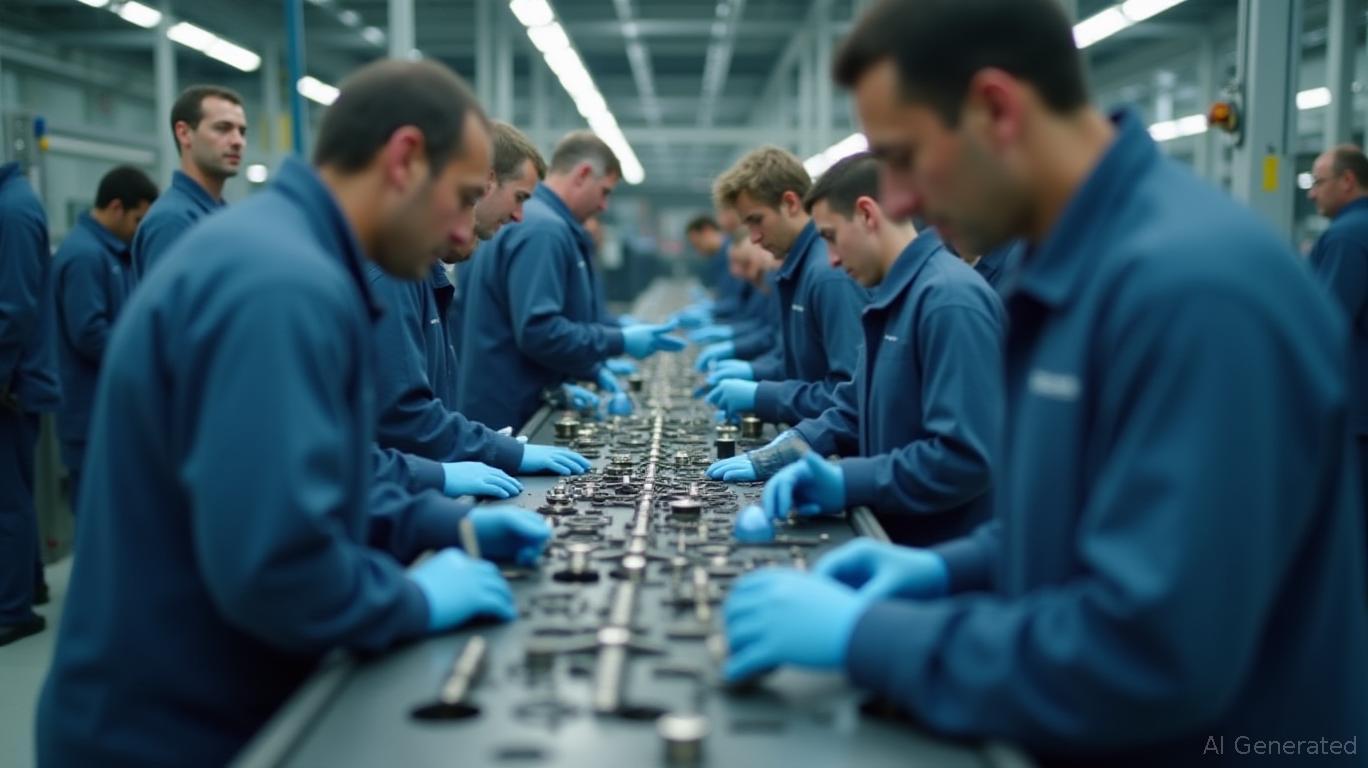Gorman-Rupp’s Strategic Appointment Signals Growth Amid Industry Tailwinds
Gorman-Rupp Company (NASDAQ: GRC) has bolstered its leadership with the election of Pamela A. Heminger to its Board of Directors—a move that underscores the manufacturer’s focus on supply chain resilience and strategic governance. Heminger, a seasoned executive with over three decades of experience in procurement and operations, joins Gorman-Rupp at a critical juncture as the company navigates a growing pumps market and improving financial performance.
Pamela Heminger: A Supply Chain Expertise Boost

Heminger’s career spans roles at Caterpillar and Honda, where she oversaw global procurement and supply chain optimization. At Caterpillar, she managed a team designing strategies to enhance value across a $100 billion supply ecosystem. Her appointment positions Gorman-Rupp to better navigate challenges such as rising material costs and global logistics disruptions, which remain risks for manufacturers.
Her immediate impact will be felt through her roles on the Compensation Committee and Governance and Nominating Committee, where she can drive efficiency in strategic decision-making. Heminger’s expertise aligns with Gorman-Rupp’s core business: designing pumps for industries including construction, HVAC, and infrastructure—a sector benefiting from global spending on water management and municipal projects.
Financial Strength Amid Sector Challenges
Gorman-Rupp’s Q1 2025 results highlight resilience despite macroeconomic headwinds. Net sales rose 2.9% to $163.9 million, driven by growth in municipal infrastructure and repair markets. Notably, net income surged 53% to $12.1 million, fueled by margin expansion and a $14.6 million reduction in debt following a May 2024 refinancing.
The company’s operating margin improved to 13.5%, up from 12.8% in Q1 2024, reflecting disciplined cost controls and pricing strategies. Meanwhile, its backlog of $217.8 million as of March 2025—up from $206 million at year-end 2024—suggests sustained demand, particularly in water infrastructure.
Industry Tailwinds Favor Gorman-Rupp
The global pumps market is projected to grow at a 3.0% CAGR to $97.08 billion by 2034, driven by infrastructure spending and sustainability trends. Gorman-Rupp’s focus on municipal and industrial markets aligns with these trends:
- Infrastructure spending: Governments worldwide are prioritizing water management, with U.S. municipal sales up $1.8 million in Q1 2025.
- Automation and IoT integration: Pumps with smart sensors and predictive maintenance—areas where Heminger’s Caterpillar experience could add value—are gaining traction in industrial applications.
- Sustainability demands: Energy-efficient pumps, critical for reducing carbon footprints, are a key growth segment.
Risks and Mitigation Strategies
Gorman-Rupp faces headwinds in construction and agriculture markets, which declined $2.7 million and $0.9 million, respectively, in Q1. However, the company’s diversified customer base—spanning defense, HVAC, and petroleum—buffers against sector-specific slumps. Management also highlighted mitigants:
- Pricing power: Selling price increases offset rising labor and overhead costs.
- Debt reduction: Total debt fell to $333.7 million in Q1, lowering interest expenses by 38.6% year-over-year.
- Supply chain agility: Heminger’s expertise could streamline procurement, reducing reliance on volatile global markets.
Conclusion: A Strategic Play for Infrastructure Investors
Gorman-Rupp’s Q1 results and Heminger’s appointment signal a company primed to capitalize on long-term industry growth. With a 53% jump in net income, reduced debt, and a backlog reflecting strong demand, the stock appears attractively positioned.
Crucially, Heminger’s track record in optimizing global supply chains could further unlock value in a market expected to grow $33 billion by 2034. For investors focused on infrastructure and industrial equities, Gorman-Rupp’s blend of financial discipline and strategic leadership makes it a compelling play.
With a backlog up 5.7% from year-end 2024 and a backlog-to-sales ratio of 133%, the company is well-positioned to sustain growth through 2025. Heminger’s arrival is not just a boardroom upgrade—it’s a strategic bet on the future of fluid-handling systems in an increasingly infrastructure-focused world.










